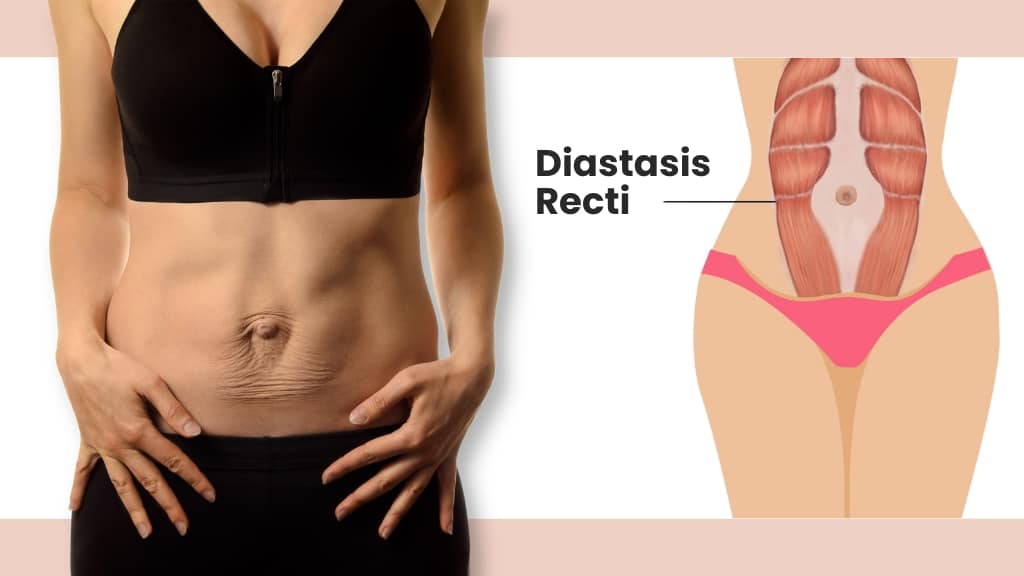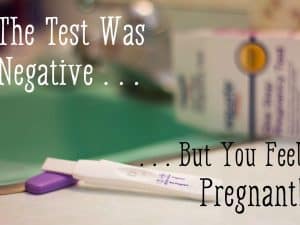
Table of Contents
An irregular gap between the two rectus muscles of the abdominal wall is referred to as a diastasis recti (officially, diastasis rectus abdominis, or DRA). An estimated 65% to 100% of pregnant and postpartum women experience this syndrome, which is highly frequent afterward. A persistent gap between the “six-pack” muscles of 1.5 to 2 cm or more is often considered unusual and requires medical attention. With constant care, the problem often gets better.
The layer of connective tissue between the rectus abdominis muscles can stretch and weaken during gestation, which could also result in this separation and a bulging of the abdominal contents. This separation, although unpleasant and inconvenient, usually gets easier a few months after childbirth. For many women, the problem does not improve without therapy.
Now that we know what diastasis recti is and how it can affect the human body, let’s learn more about its causes, symptoms, diagnosis, and treatment.
Causes
One of the main causes of diastasis recti is increased intra-abdominal pressure. Your abdominal muscles expand throughout pregnancy to make room for your expanding uterus, which thins the connective tissue. The relaxin, progesterone, and estrogen pregnancy hormones also aid in the tissue’s relaxation. A partial or total separation of the rectus abdominis may happen as this advances.
The following risk factors increase the possibility that DRA may cause complications for you during pregnancy:
- Mother’s advanced age (35 or older)
- Large infant
- Additional pregnancy
- Multiple pregnancies or twins
Diastasis recti can affect men and women after menopause, although it most frequently affects pregnant and recently delivered women. The primary contributing factors in these situations are straining, abrupt changes in body weight, hard lifting, and workouts like crunches. Diastasis recti can occur at birth in some babies, but it’s usually not a problem because it resolves on its own.
Symptoms
Most people will not be aware of diastasis recti until after giving birth because your abdomen is stretched during pregnancy. When it comes to postpartum diastasis recti symptoms, the following symptoms can be commonly observed:
- Weak abdominals
- Chronic constipation
- Urinary incontinence while coughing or sneezing
- Poor posture
- Low backache
- Hip or pelvic pain
- Pain during sex
- Doming or coning when you contract your abdominal muscles
- Difficulty exercising, lifting objects, and/or walking every day
- Jelly-like or soft feel around your belly button
A visible pooch or bulge sticking out just below or above the belly button
Diagnosis
Many women may feel the separation In the mid-section of their abdomen. However, it’s important to see your doctor for a formal diagnosis to receive the best care. To determine that you have diastasis recti and how bad it is, your doctor will do a thorough physical examination. Your DRA might be above, below, or open (when there is no difference between the areas above and below the navel). To help with the diagnosis, some doctors will employ imaging techniques like an ultrasound or CT scan. Along with your OB/GYN, a physical therapist with postpartum care training can also do the physical examination.
The physical examination involves the patient lying down on their back in a slight abdominal crunch. They are asked to palpitate their rectus abdominis muscle and the separation centimeters are noted down. If the separation is more than 1.5 cm then the patient is diagnosed with diastasis recti. They have then advised rehab exercises.
You can check for yourself too for any signs of these conditions by feeling the muscles around your belly button while down. Look out for any separation or depression between the abdominal muscles. If so, you need to consult a medical professional. Check out your treatment options below.
Treatment
Exercises to rebuild the separation are the main part of diastasis recti therapy. It also includes instructions on exercises to avoid since they might worsen the separation until you are fully recovered. However, keep in mind that even with physical treatment, your abdominal muscles could never entirely recover from the stretching experienced during pregnancy. Surgery can be recommended if your DRA is pretty painful, but in most cases, physical therapy can help your condition enough to skip invasive procedures.
● Surgery
Diastasis recti usually do not require surgical treatment since it is not a true hernia (there is no herniation of intra-abdominal contents through the connective tissue of the abdominal wall). Instead, it is recommended that you begin with safe and proper workouts, which are often beneficial in healing diastasis recti, especially if you avoid restraining your diastasis recti.
However, some women could find that rehabilitation exercises are insufficient to treat their diastasis recti. Abdominoplasty, sometimes known as a “tummy tuck,” is a possibility here. A 2019 research indicated significant surgical success rates in restoring trunk stability and lowering urine incontinence in women whose DRA failed to improve with non-invasive methods.
● Neuromuscular Electromagnetic Stimulation
There is also a developing non-surgical therapy, called the Emscuplt, that employs a high-strength magnet to produce muscle spasms, which may improve with diastasis recti. Abdominal muscle contractions brought on by neuromuscular electromagnetic stimulation aid in strengthening and healing. Studies have shown that this therapy is effective, especially in combination with the recommended strengthening exercises.
● Exercises (Do’s and Don’ts)
Do’s
Despite the apparent limitations, there are safe workouts you can do while having diastasis recti. Such therapies involve deep abdominal movements that are performed with a straight spine—typically while lying down with the knees raised—and that promote the control and usage of the transverse abdominis.
In essence, the abdominals are constricted, pulling toward the spine with increasing force, and held for increasing lengths of time, beginning with around 10 seconds each. The ideal duration of these holds is 10 minutes every day. Pelvic floor exercises like the Kegel and pelvic tilts are also beneficial. It’s crucial to execute these movements with good form so keep in touch with a physical therapist to supervise your workouts.
Don’ts
New moms are advised against abdominal workouts, especially crunches. Other workouts to avoid, besides sit-ups, are
- Yoga asanas that stress your abdominal muscles
- Backward bends that stretch the abdominal muscles
- Any strenuous exercises that cause the stomach to protrude (like in a Valsalva maneuver)
- Any workouts that force you to bend over on your knees without the assistance or strength of your abdominals
- Abdominal twists
Prevention
You could wish to improve your abdominal muscles both before and during pregnancy if you’re thinking about getting pregnant again. According to research findings from 2019, prenatal abdominal strengthening workouts can help reduce the severity of diastasis recti.
● Binding Devices
Some doctors advise using binding devices, which are tight elastic bands that go around your midsection. The binders, also known as belly bands, serve primarily as a reminder to keep your abdominals engaged and to support your low back. Both your DRA and your abdominal muscles cannot be cured or strengthened by wearing binders. However, proponents of the devices assert that wearing one makes it easier to adhere to your treatment plan more strictly.
● Prognosis
DRA affects the majority of pregnant women immediately after delivery, while only 40% do so six months later. New moms who did the suggested exercises for 12 or more weeks for a satisfactory recovery. However, the results kick in by the 4th week of your exercise routine.
A Final Word
Diastasis recti are prevalent in women who have either given birth or are pregnant. Usually, it disappears completely eight weeks after birth. Around 40% of those who have diastasis recti still have it even after 6 months of giving birth. When the core muscles are tense, some women experience a jelly-like sensation in the region between their left and right abdominals.
You may be more likely to develop diastasis recti if you have several risk factors:
- Vaginal delivery can increase abdominal pressure
- Being thin and tiny
- Having a big or heavy baby
- Giving birth after 35 years of age
- Having multiple pregnancies
Diastasis recti don’t hurt. Although some of the diastasis’s side effects may cause pain, the ab separation itself is painless. The pain kicks in when doing simple tasks, including carrying a laundry basket. The condition does resolve on its own but if it doesn’t, it could be treated with binding devices or a tummy tuck.





